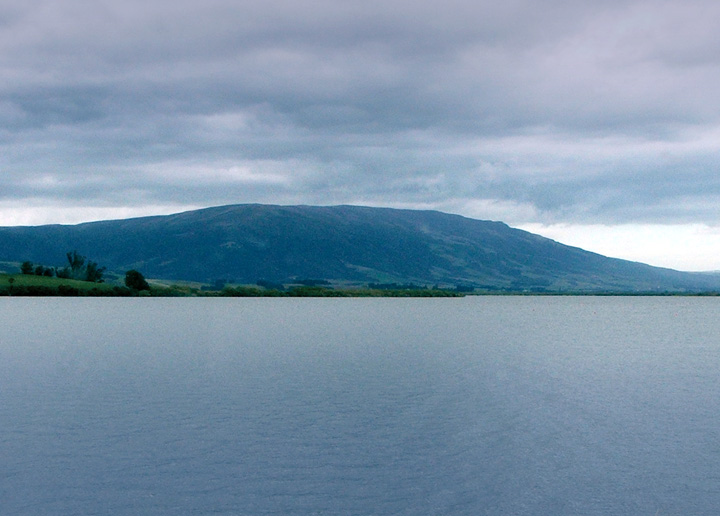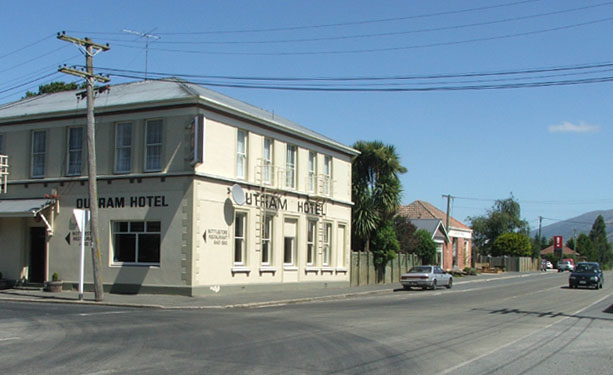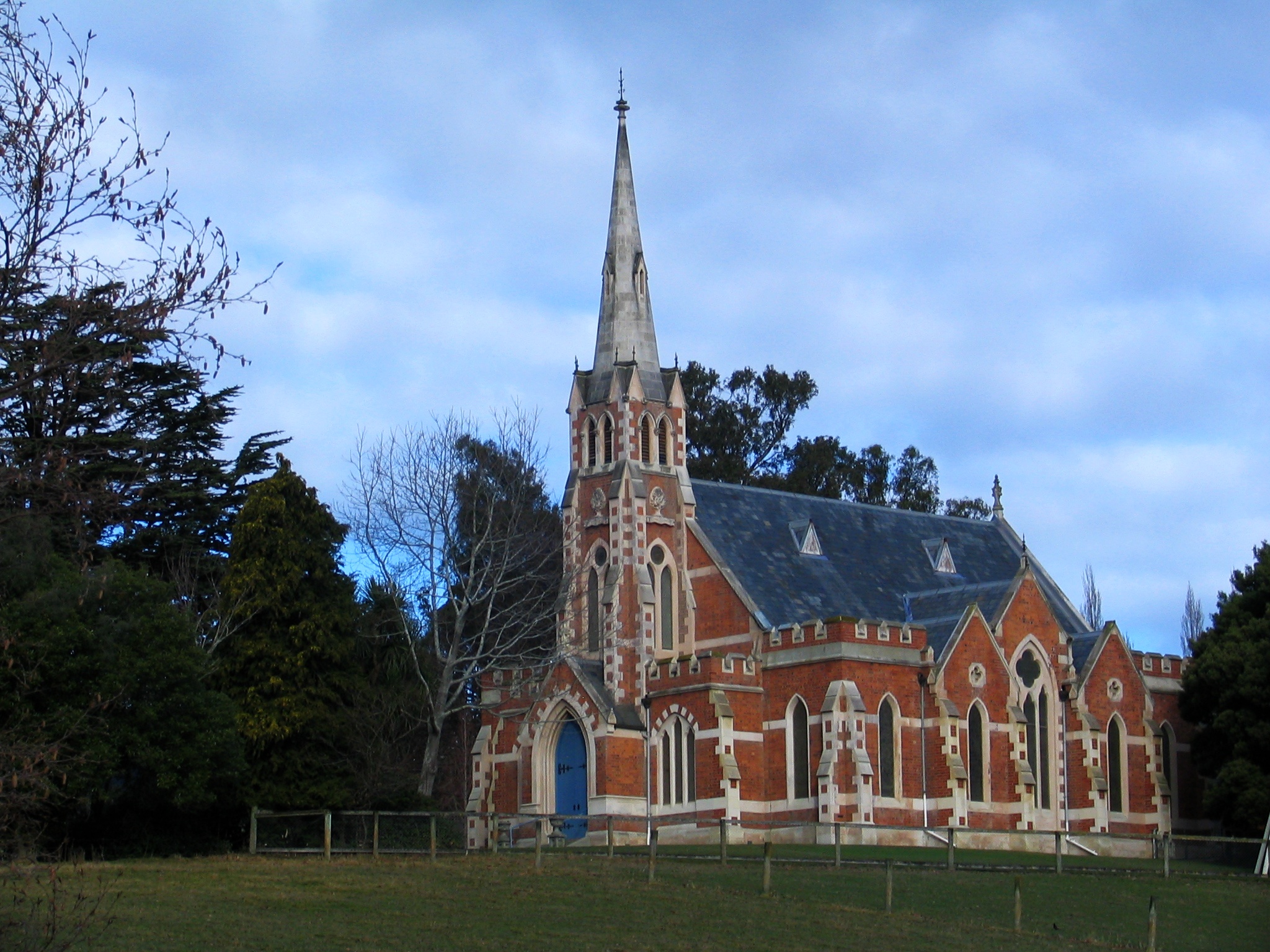|
Taieri Plain
The Taieri Plain (also referred to in the plural as the Taieri Plains) is an area of fertile agricultural land to the southwest of Dunedin, in Otago, New Zealand. The plain covers an area of some 300 square kilometres, with a maximum extent of 30 kilometres. It is not to be confused with Strath Taieri, a second plain of the Taieri River, 40kms to the north beyond Mount Ross. The floodplain of the Taieri and Waipori Rivers, the plain is enclosed to the west by Maungatua and the Silverpeaks Range, and to the south and east by a low range of coastal hills.Dowling, P. (ed.) (2004). ’’Reed New Zealand atlas’’. Auckland: Reed Publishing. Map 103. Dairy and sheep farming dominate the agriculture of the plain, although deer farming is starting to have an economic impact. The alluvial nature of the land means that floods are not uncommon, especially in the area around the confluence of the two rivers. Stopbanks protect farmland, houses and Dunedin International Airport at Momo ... [...More Info...] [...Related Items...] OR: [Wikipedia] [Google] [Baidu] |
Momona
Momona is a small town on the Taieri Plain in New Zealand's South Island. Momona School was established in 1899 and closed in 2004. The Henley Co-operative Dairy Company, established in nearby Henley, moved their cheese factory here, and was closed in the 1980s. Momona is the location of Dunedin International Airport. With the establishment of the airport, an extra township was built for families of airport staff, its three streets being named after RNZAF airmen who received the Victoria Cross: James Allen Ward, Lloyd Trigg, and Leonard Henry Trent. New Zealand's lowest point, at below sea level, is located on Kirk's Drain Road just to the southwest of Momona. The road was named after John Kirk, a nearby resident, who was the grandfather of the Rt. Hon. Norman Kirk, Prime Minister of New Zealand from 1972 to 1974. Demographics The Momona statistical area, which also includes Outram and Allanton, covers and had an estimated population of as of with a population density ... [...More Info...] [...Related Items...] OR: [Wikipedia] [Google] [Baidu] |
Sinclair Wetlands
The Sinclair Wetlands (''Te Nohoaka o Tukiauau'') are an internationally renowned wetlands located to the south west of Dunedin, New Zealand, at the southern edge of the Taieri Plains. They are on the western side of Lake Waipori and approximately equidistant between Mosgiel and Milton. The protected area covers a little over 315 Ha 3 km2. The wetlands are home to many species of birds including scaup, swans and many more wetland waterfowl including the fernbird and rare bittern. A number of birds such as white herons and spoonbills occasionally frequent the area also. The wetlands are named for Horace "Horrie" Sinclair, a local farmer who donated land to the wetlands scheme in 1984. An education centre opened in the late 1980s is located at the wetlands. The wetlands contain a small island (Whakaraupuka / Ram Island), which was in ancient times the location of a Maori settlement, Tukiauau Pa. In the 1986 New Year Honours, Horace Sinclair was appointed a Member of the Or ... [...More Info...] [...Related Items...] OR: [Wikipedia] [Google] [Baidu] |
Lake Waipori
Lake Waipori is the smaller and shallower of the pair of lakes located in the wetlands to the south west of Dunedin in New Zealand on the Waipori River. The Waipori River is a major tributary of the Taieri River The Taieri River is the fourth-longest river in New Zealand and is in Otago in the South Island. Rising in the Lammerlaw Range, it initially flows north, then east around the Rock and Pillar range before turning southeast, reaching the sea sout ..., and these wetlands form the southern edge of the Taieri Plains. The lake is inhabited by various waterfowl and wetland birds. It is however too shallow and inaccessible (due to being surrounded with wetlands) to allow for recreation other than fishing and duck hunting in season. It is possible to travel from the Waipori River at Berwick through the lake and through to Lake Waihola in a flat bottomed dinghy or jetboat. The lake is too shallow for other forms of motorboat. The lake is bordered to the southwe ... [...More Info...] [...Related Items...] OR: [Wikipedia] [Google] [Baidu] |
Lake Waihola
Lake Waihola is a 640 ha tidal freshwater lake located 15 km north of Milton in Otago, in New Zealand's South Island. Its area is some 9 square kilometres, with a maximum length of 6 kilometres and a mean depth of 0.75m. It is the larger of a pair of existing lakes—the other being Lake Waipori—which lie in a small area of low hills between the Taieri and Tokomairaro. Waihola is drained by the Waipori River, a tributary of the Taieri. Both lakes are very shallow and surrounded by wetlands, including the internationally renowned and protected Sinclair Wetlands which are the home to many species of wading birds. This shallowness is reflected in the name Waihola, the southern Māori form of the word ''waihora'', which means "spreading waters". Lake Waihola is a popular day trip for holidaymakers from Dunedin, 40 km to the north. The small township of Waihola (population 200), nestled against the lake's eastern edge, has facilities for fishing, yachting, and ... [...More Info...] [...Related Items...] OR: [Wikipedia] [Google] [Baidu] |
Clutha River
The Clutha River (, officially gazetted as Clutha River / ) is the second longest river in New Zealand and the longest in the South Island. It flows south-southeast through Central and South Otago from Lake Wānaka in the Southern Alps to the Pacific Ocean, south west of Dunedin. It is the highest volume river in New Zealand, and the swiftest, with a catchment of , discharging a mean flow of . The river is known for its scenery, gold-rush history, and swift turquoise waters. A river conservation group, the Clutha Mata-Au River Parkway Group, is working to establish a regional river parkway, with a trail, along the entire river corridor. Geography The ultimate source of the river is at the head of the Makarora River, close to the saddle of the Haast Pass, which flows into the northern end of Lake Wānaka. The southern end of the lake drains into the nascent Clutha close to Albert Town, where it is met by its first main tributary, the Hāwea River, the outflow of Lake Wānaka ... [...More Info...] [...Related Items...] OR: [Wikipedia] [Google] [Baidu] |
Tokomairaro River
The Tokomairaro River is located in Otago, New Zealand. It flows southeast for some 50 kilometres (30 mi), reaching the Pacific Ocean at Toko Mouth 50 kilometres (30 mi) south of Dunedin. The town of Milton is located on the Tokomairaro's floodplain, close to the junction of its two main branches (which run past the north and south ends of the town). The name of the river is Māori Māori or Maori can refer to: Relating to the Māori people * Māori people of New Zealand, or members of that group * Māori language, the language of the Māori people of New Zealand * Māori culture * Cook Islanders, the Māori people of the C ..., and translates roughly as 'place where canoe must be poled' (a possible reference to the method needed to travel through the extensive wetlands, instead of the usual paddling). The Tokomairaro River is prone to seasonal flooding during the heavy rainfall months, August to October. Local industrial buildings have been forced to build high co ... [...More Info...] [...Related Items...] OR: [Wikipedia] [Google] [Baidu] |
South Otago
South Otago lies in the south east of the South Island of New Zealand. As the name suggests, it forms the southernmost part of the geographical region of Otago. The exact definition of the area designated as South Otago is imprecise, as the area is defined not in geopolitical or administrative terms, but rather by the area's topographical features and the similarity of its communities. Overall, it encompasses some 8,000 km² (3,100 sq mi) and has a population of approximately 20,000, but these figures vary according to the various definitions of South Otago's boundaries. The area is often seen as roughly congruous with the Clutha District, which has its administrative centre at Balclutha, New Zealand, Balclutha. However, most of the Taieri catchment, from Taieri Mouth and Henley to Mosgiel and Middlemarch, with the coastal areas around Brighton, has been part of the City of Dunedin since 1989. The southwestern part of Clutha District, around the townships of Tapanui and Clinton, ... [...More Info...] [...Related Items...] OR: [Wikipedia] [Google] [Baidu] |
Allanton, New Zealand
Allanton ( mi, Ōwhiro) is a small town in Otago, New Zealand, located some 20 kilometres southwest of Dunedin on State Highway 1. The settlement lies at the eastern edge of the Taieri Plains close to the Taieri River at the junction of the main road to Dunedin International Airport at Momona. Established near the junction of the Taieri River and Owhiro Stream the site was first known to Europeans as "Scroggs' Creek Landing" after Samuel Scroggs, a member of Charles Kettle's survey teams. The surrounding area was (and still is) known as Owhiro. In 1875, with the arrival of the railway south from Dunedin; and satisfying criteria for a "town", the community was renamed Greytown - after former Governor Sir George Grey. Among those who took up land in the growing community were immigrant Poles, from among the " Brogdenites" who had constructed the railway. Several Polish surnames survive in the local community. In 1895 a conflict of identity was recognised between the local communi ... [...More Info...] [...Related Items...] OR: [Wikipedia] [Google] [Baidu] |
Henley, New Zealand
Henley is a township on New Zealand's Taieri Plains, named after the rowing centre Henley-on-Thames in England. It lies close to the confluence of the Taieri and Waipori Rivers at the eastern edge of the plain, at the foot of a low range of coastal hills. The township lies close to the ecologically significant Sinclair Wetlands, which lie to the west. Henley is near the south-west extremity of the City of Dunedin, 35 km from the city centre, and close to Lake Waihola, one of the country's rowing centres. Henley's population is about 250. The town was founded at some point prior to 1880. The main industry is dairy farming. Henley used to have a cheese factory which later moved to the nearby township of Momona. This was later bought out by the company that became Mainland Cheese. The churches in Henley are Presbyterian and Brethren. The original Māori name for Henley is Maitapapa. A pre-European Maori settlement lay to the south of Henley, close to the Taieri River. He ... [...More Info...] [...Related Items...] OR: [Wikipedia] [Google] [Baidu] |
Outram, New Zealand
Outram is a rural suburb of Dunedin, New Zealand, with a population of 642 (2006 Census). It is located 28 kilometres west of the central city at the edge of the Taieri Plains, close to the foot of Maungatua. The Taieri River flows close to the southeast of the town. Outram lies on State Highway 87 between Mosgiel and Middlemarch. The original town was formed at a river crossing (ferry then bridge) on a route to the Central Otago goldfields. The village was moved following a flood in the late 19th century and relocated to its current location. It was the first town in New Zealand to have electric street lights and still has the town's library. From 1877 until 1953, Outram was served by a branch line railway that connected with the Main South Line. This line was known as the Outram Branch and it had a relatively unremarkable career. Closure came as a result of an almost total absence of traffic caused by the development of road transport during the first half of the 20t ... [...More Info...] [...Related Items...] OR: [Wikipedia] [Google] [Baidu] |
Mosgiel
Mosgiel (Māori: ''Te Konika o te Matamata'') is an urban satellite of Dunedin in Otago, New Zealand, fifteen kilometres west of the city's centre. Since the re-organisation of New Zealand local government in 1989 it has been inside the Dunedin City Council area. Mosgiel has a population of approximately as of . The town celebrates its location, calling itself "The pearl of the plain". Its low-lying nature does pose problems, making it prone to flooding after heavy rains. Mosgiel takes its name from Mossgiel Farm, Ayrshire, the farm of the poet Robert Burns, the uncle of the co-founder in 1848 of the Otago settlement, the Reverend Thomas Burns. A popular, though probably apocryphal, local theory is that the extra "s" was dropped at a time when the cost of telegrams was calculated by the number of characters. The name of the Dunedin suburb of Roslyn (named for Rosslyn in Scotland) is similarly truncated. These two places were sites of major woollen mills – as was the town of M ... [...More Info...] [...Related Items...] OR: [Wikipedia] [Google] [Baidu] |



